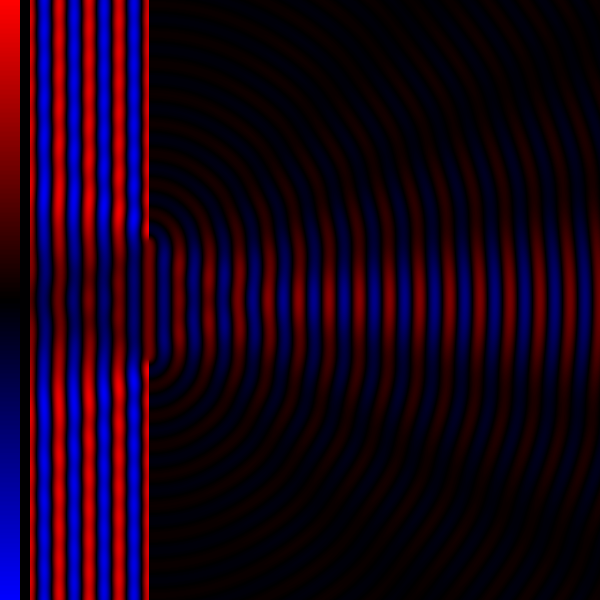Ezekiel Dixon-Román, “Algo-Ritmo: More-Than-Human Performative Acts and the Racializing Assemblages of Algorithmic Architectures,” Cultural Studies–Critical Methodologies 16, no. 5 (2016).
By “other-wise,” I am referring to the onto-epistemologies of the Other.
Jasbir Puar, The Right to Maim: Debility, Capacity, Disability (Duke University Press, 2017).
See Gille Deleuze, “Postscript on the Societies of Control,” October, no. 59 (1992).
See Brian Massumi, Ontopower: War, Powers, and the State of Perception (Duke University Press, 2015).
Massumi, Ontopower.
See Antoinette Rouvroy and Thomas Berns, “Algorithmic Governmentality and Prospects of Emancipation: Disparateness as a Precondition for Individuation through Relationships?” Réseaux 177, no. 1 (2013).
This is a critique that is based on a politics of representation and a logic of inclusion. While representation and inclusion are necessary for addressing certain matters, they are not enough to transform the norms and epistemologies of power and decision-making. For further discussion on this, see Denise Ferreira da Silva, Toward a Global Idea of Race (University of Minnesota Press, 2007).
Here, “potentiation” refers to the shaping of potential under conditions of uncertainty.
See Sylvia Wynter, “Towards the Sociogenic Principle: Fanon, Identity, the Puzzle of Conscious Experience, and What it Is Like To Be Black,” in National Identities and Sociopolitical Changes in Latin America, ed. Antonio Gomez-Moriana and Mercedes Duran-Cogan (Routledge, 2001); and Sylvia Wynter, Human Being as Noun? Or Being Human as Praxis? Towards the Autopoetic Turn/Overturn: A Manifesto, 2007 →.
Michelle Ann Stephens, Skin Acts: Race, Psychoanalysis, and the Black Male Performer (Duke University Press, 2014). Here, Stephens is building on Hortense Spillers’s conceptualization of the flesh in “Mama’s Baby, Papa’s Maybe: An American Grammar Book,” Diacritics 17, no. 2 (Summer 1987). As Spillers insightfully states, “Before the ‘body’ there is ‘flesh,’ that zero degree of social conceptualization that does not escape concealment under the brush of discourse or the reflexes of iconography” (67).
See Karen Barad, Meeting the Universe Halfway: Quantum Physics and the Entanglement of Matter and Meaning (Duke University Press, 2006).
Denise Ferreira da Silva, “On Difference Without Separability,” in 32nd Bienal de São Paulo: Incerteza viva (Fundação Bienal de São Paulo, 2016) →.
Muhammad Ali et al., “Discrimination through Optimization: How Facebook’s Ad Delivery Can Lead to Biased Outcomes,” Proceedings of the ACM on Human-Computer Interaction, no. 3 (2019).
Luciana Parisi, “Xeno-Patterning,” in Angelaki 24, no. 1 (2019).
Denise Ferreira da Silva, “Toward a Black Feminist Poethics: The Quest(ion) of a Blackness Toward the End of the World,” The Black Scholar 44, no. 2 (2014).
Da Silva, “Toward a Black Feminist Poethics.”
Deleuze, “Postscript on the Societies of Control.”
See discussion in The Right to Maim, 21–25.
John Modern, “In the Age of Cybernetic Systems What Like a Bullet Can Undeceive?” Political Theology, April 29, 2021 →.
Helga Tawil-Souri, “Digital Occupation: Gaza’s High-Tech Enclosure,” Journal of Palestine Studies 41, no. 2 (2012); Omar Jabary Salamanca, “Unplug and Play: Manufacturing Collapse in Gaza,” Human Geography 4, no. 1 (2011).
Julie Peteet, “Stealing Time,” Middle East Research and Information Project, no. 248 (Fall 2008) →.
Rema Hammami, “On (Not) Suffering at the Checkpoint: Palestinian Narrative Strategies of Surviving Israel’s Carceral Spaces,” Borderlands, vol 14 no 1: 2015.
Alex Weheliye, Habeas Viscus: Racializing Assemblages, Biopolitics, and Black Feminist Theories of the Human (Duke University Press, 2014).
Puar, The Right to Maim, 136.
Puar, The Right to Maim, 55.
Joseph Pugliese, Biopolitics of the More-Than-Human: Forensic Ecologies of Violence (Duke University Press, 2020).
See in this issue Ezekiel Dixon-Román and Ramon Amaro, “Haunting, Blackness, and Algorithmic Thought” →.
Erica Edwards, The Other Side of Terror: Black Women and the Culture of U.S. Empire (NYU Press, 2021).
Luciana Parisi, Contagious Architecture; Computation, Aesthetics, and Space (MIT Press, 2013), xvii.
See Hilo Glazer, “‘42 Knees in One Day’: Israeli Snipers Open Up About Shooting Gaza Protesters,” Haaretz, March 6, 2020 →.
Denise Ferreira da Silva, “1 (life) ÷ 0 (blackness) = ∞ − ∞ or ∞ / ∞: On Matter Beyond the Equation of Value,” e-flux journal, no. 79 (February 2017) →.
Patrick Wolfe, “Settler Colonialism and the Elimination of the Native,” Journal of Genocide Research 8, no. 4 (2006).
The brilliant constellation of thought generated by and between Hortense Spillers and C. Riley Snorton on ungendering, fungibility, and fugitivity is inspiring here. See Spillers, “Mama’s Baby, Papa’s Maybe: An American Grammar,” Diacritics 17, no. 2 (1987); and Snorton, Black on Both Sides: A Racial History of Trans Identity (University of Minnesota Press, 2017).
Da Silva, “1 (life) ÷ 0 (blackness).”
